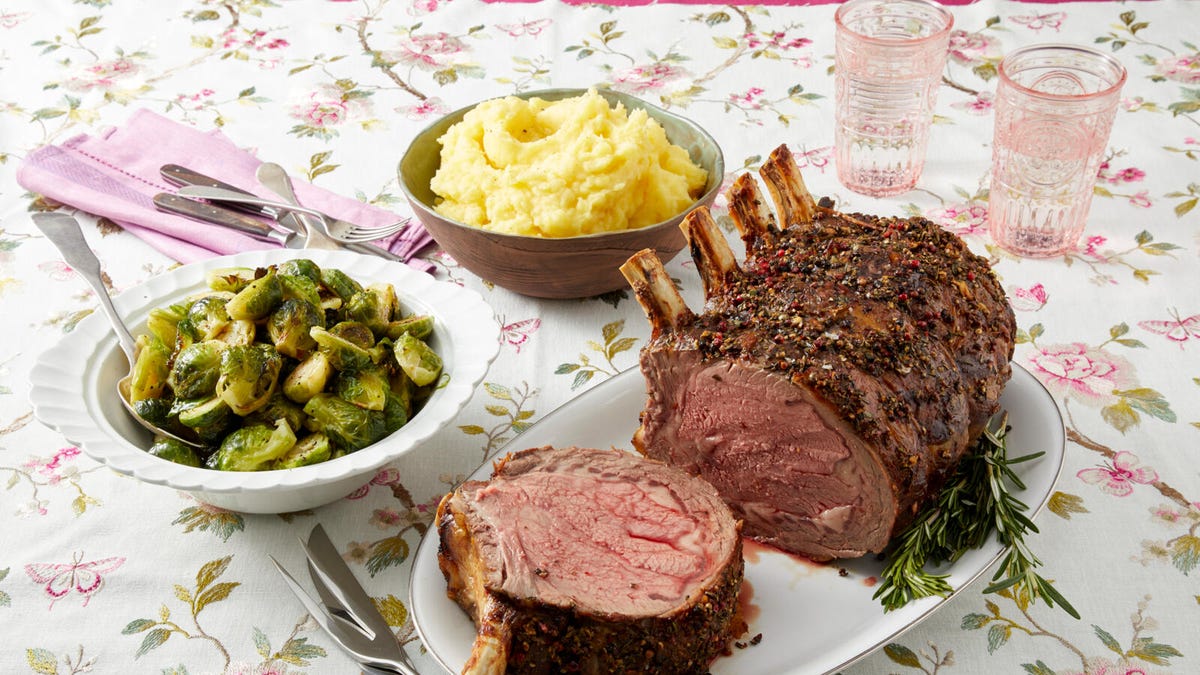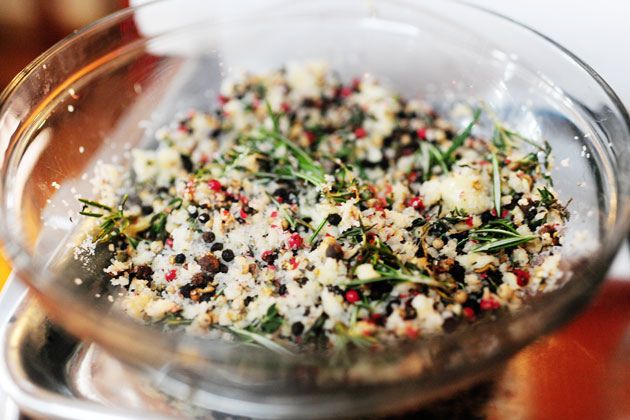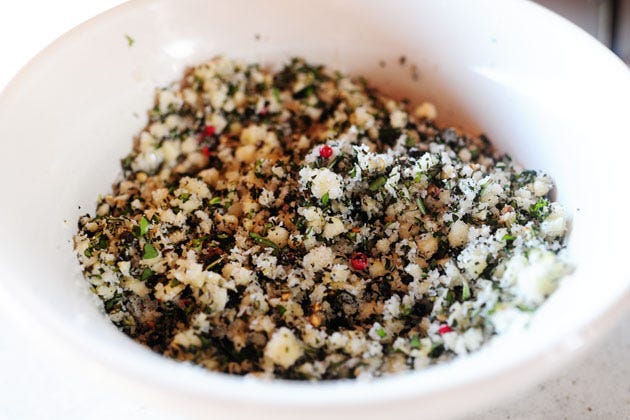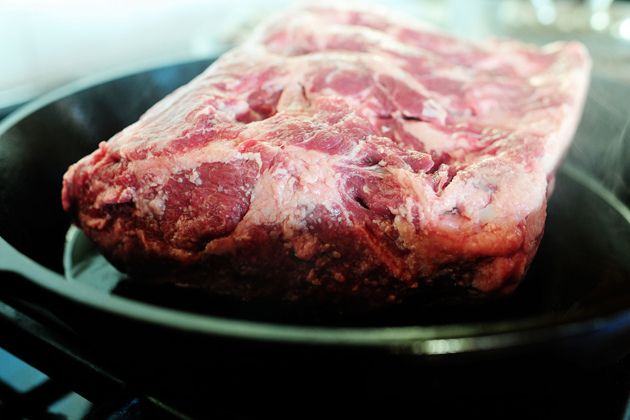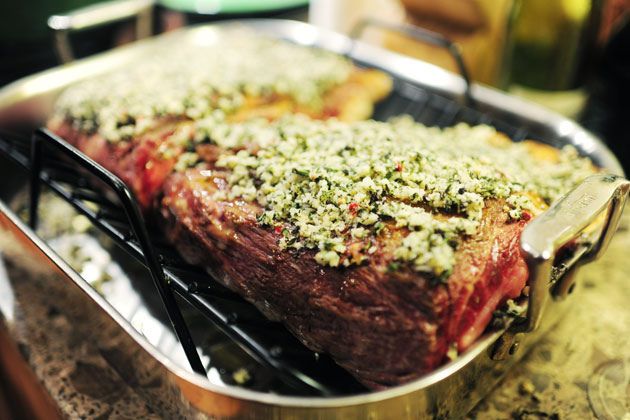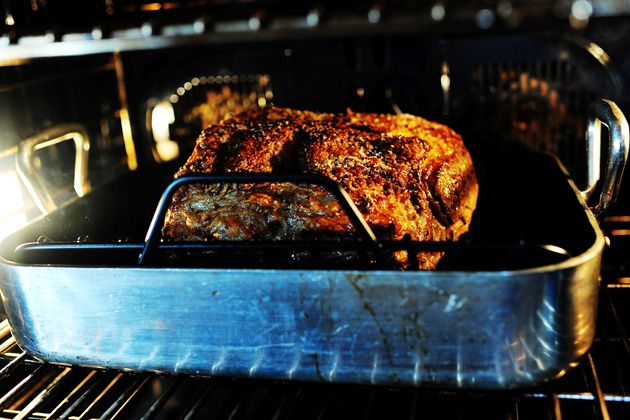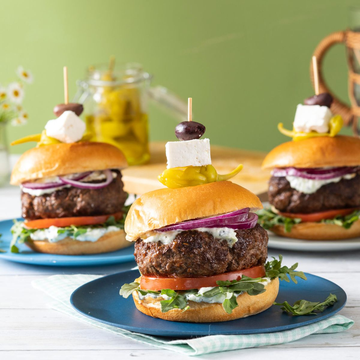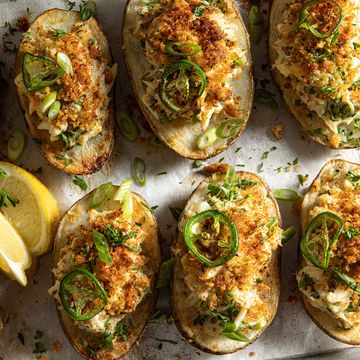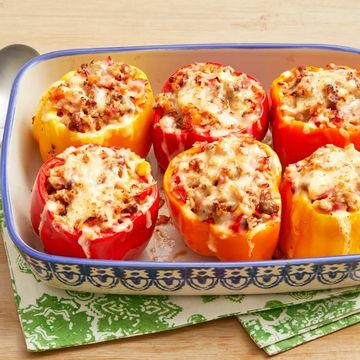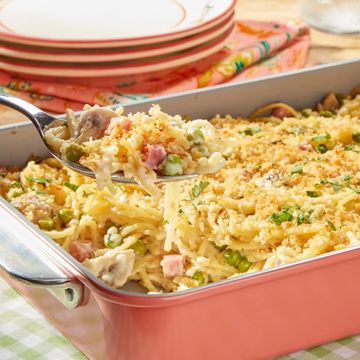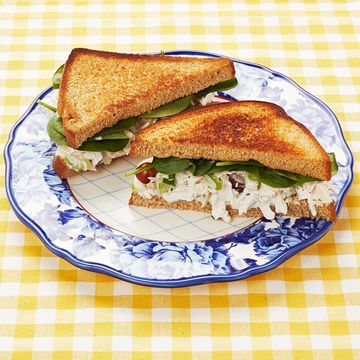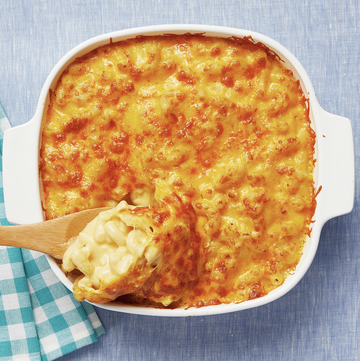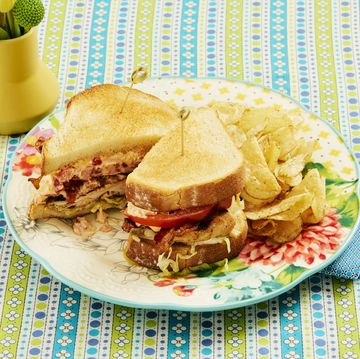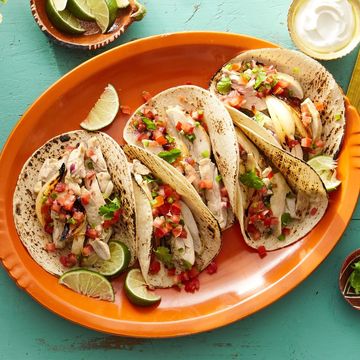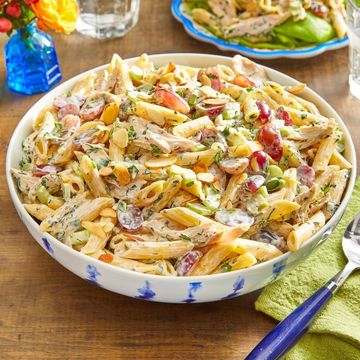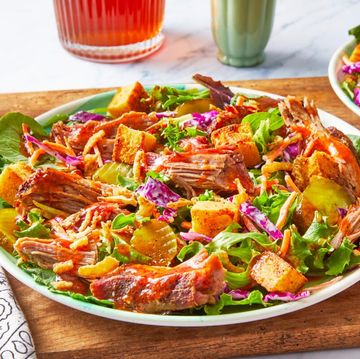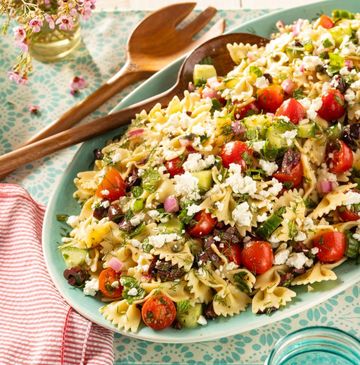(Note: Photos below are from a couple of different prime ribs I’ve made over the past couple of months. Don’t be confused if you see different pans/different pieces of meat!)
I start with a whole ribeye (boneless or bone-in), sometimes called a rib loin, about 13-14 pounds. If you were to cut this into slices, you’d have a bunch of boneless ribeye steaks. (And the price reflects this. Wow.)
Note that I am going to cut this piece of meat in half and roast it in two pieces. If you don’t have a large crowd to feed, you could easily buy half this amount!
Either way, though, prime rib is pricey…which is why it’s usually reserved for holidays or other special occasions.
I don’t have many step-by-step photos for this, so here’s the final photo of my salt “crust.” I just combined kosher salt, crushed tri-color peppercorns (I put them in a Ziploc bag and whacked them with a rolling pin), plenty of minced garlic, and a bunch of rosemary leaves and thyme leaves. This isn’t a hard, crack-it-open salt crust; it’s a light coating of flavor that’s both pretty and scrumptious. I absolutely love it.
I made prime rib again for a dinner party a couple of weeks ago, and I chopped the rosemary and thyme rather than leaving the leaves whole. I didn’t like it as much; it was missing that “evergreen in the snow” look of the original.
Live and learn.
Begin by heating a heavy iron skillet over very high heat. Also known as high heat. Ha. Drizzle in plenty of olive oil…
And brown each piece of meat on both sides, about 3 minutes per side.
After the meat is browned, transfer it to a roasting pan with the fat side up. Pour half the salt mixture all over the top, letting it cascade over the sides a bit. Repeat with the other half of the meat.
Throw the meat into a preheated 500 degree oven and roast it for 20 to 25 minutes. This will start the cooking process and ensure that the prime rib will have beautiful, sizzly color.
After that time, reduce the heat to 300 degrees and insert the meat thermometer so that the probe goes right into the middle of the meat. Continue roasting the meat for an additional 25 to 30 minutes for rare…longer for medium rare. Just watch the thermometer and remove it when it’s 5 to 10 degrees before the temperature you want, because it will continue cooking after you remove it from the oven.
UPDATE: Be prepared to roast the meat longer than 30 minutes to get it done to your liking. (We like ours very, very rare!) Just watch the meat thermometer.
Remove the meat from the pan and let it rest, covered in foil, on the cutting board for at least 20 minutes. (Never cut into roast beef immediately after removing it from the oven! It’s against the law.)
This is a really nice medium-rare and is on the verge of being too cooked for me. But it’s perfect for a crowd!
Mmmmm. Beaut-ee-ful. And again, if I were serving just my family (as you’ll notice if you watched the Christmas special) I would have gone much more rare than this.
Now this? This is too done. Still yummy, of course, but there’s just not enough red going on. I’d consider this medium. There’s a little bit of pink, but not enough to count. (Note that this does make yummy thin-sliced roast beef for sandwiches later.)
(Though again…my beef doneness tolerance is a little skewed considering I live among ranchers.)
Just remember to watch the meat thermometer! Again, it’s your best friend.
Tomorrow: Potatoes!
